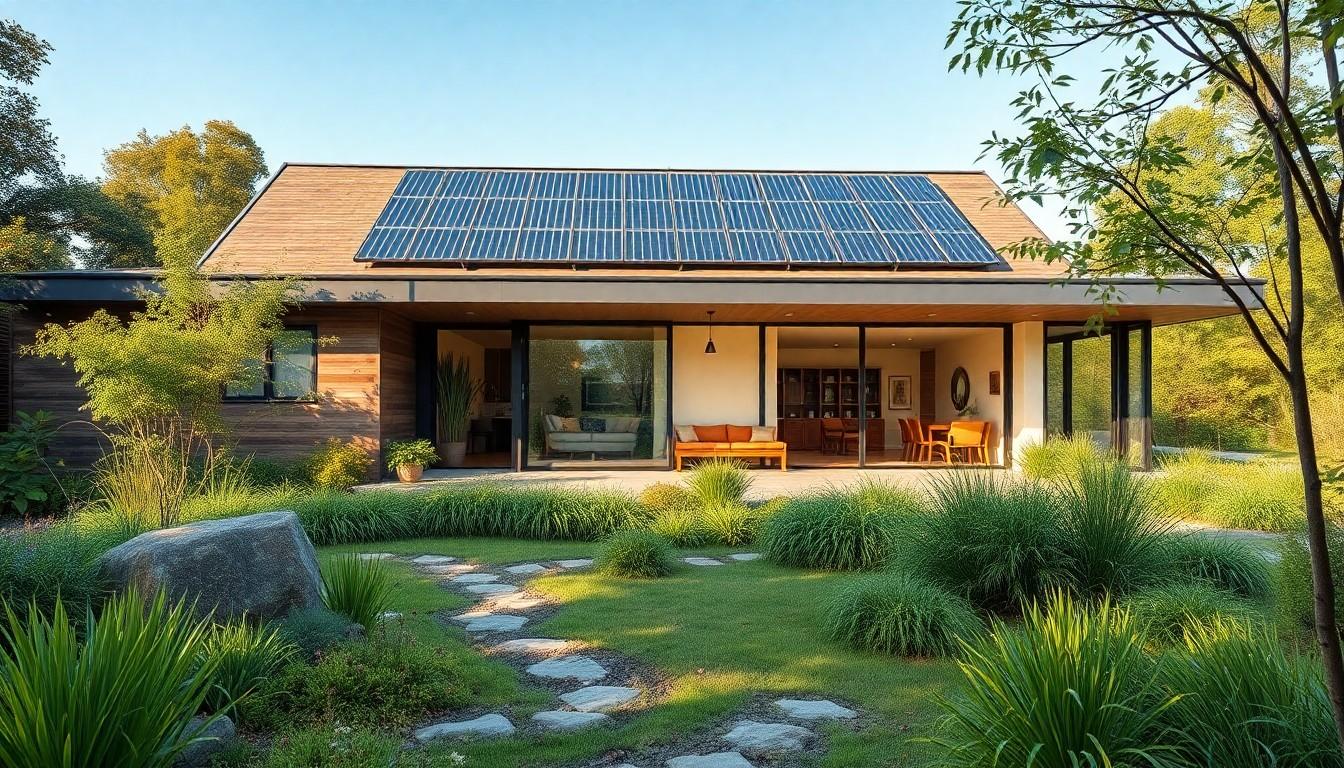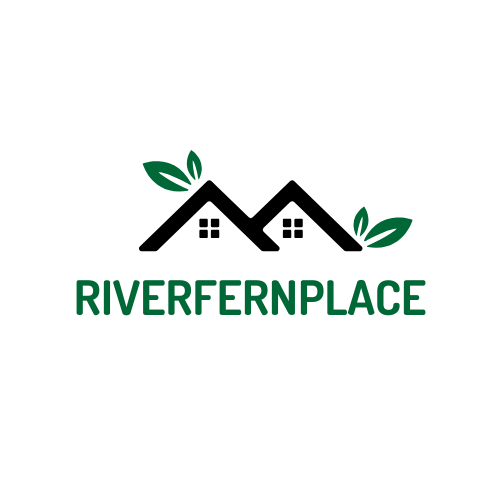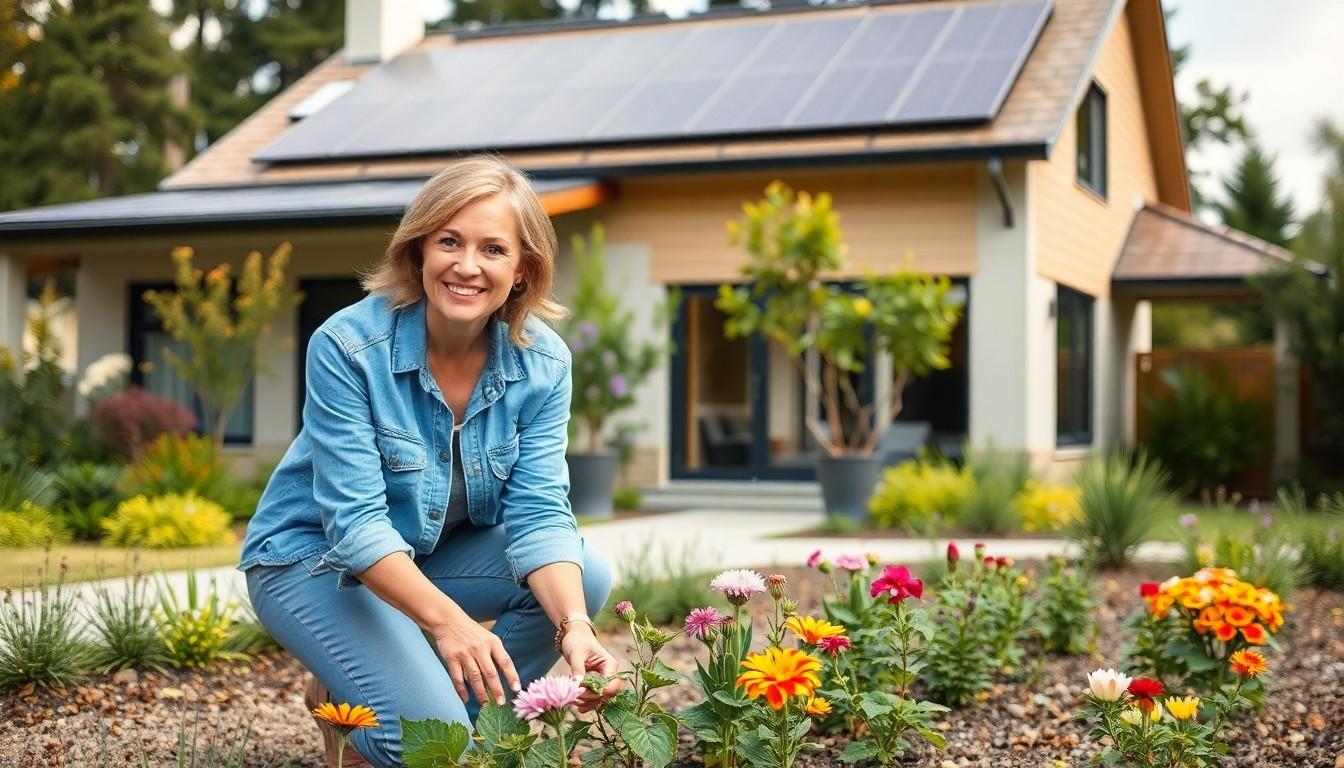In a world where the planet’s in a bit of a pickle, eco-friendly home design isn’t just a trend; it’s a lifestyle choice that even Mother Nature would approve of. Imagine living in a space that not only reflects your unique style but also gives a high-five to the environment. With a few clever tweaks, your home can be the envy of your neighbors and a sanctuary for sustainability.
Eco Friendly Home Design
Eco-friendly home design refers to creating living spaces that prioritize sustainability and environmental responsibility. This design approach incorporates various elements aimed at minimizing environmental impact while maximizing energy efficiency. When building or renovating, it’s crucial to consider materials that reduce harmful emissions, such as recycled or sustainably sourced products.
Designing an eco-friendly home often includes features like solar panels, which harness renewable energy and decrease dependency on non-renewable resources. Furthermore, energy-efficient appliances lower energy consumption, contributing to reduced utility bills and a smaller carbon footprint. Choosing low-VOC paints and sealants enhances indoor air quality and promotes a healthier living environment.
Landscaping also plays a significant role in eco-friendly design. Native plants require less water, reduce maintenance, and support local ecosystems. Incorporating rain gardens or permeable paving systems aids in managing stormwater runoff, protecting local waterways.
Home orientation matters as well. Positioning homes to take advantage of natural light can maximize solar gain in winter while minimizing heat in summer. This strategic design element adds to energy efficiency throughout the year.
Ultimately, eco-friendly home design combines functionality and aesthetics, proving that sustainable living can be both beautiful and practical. Choosing these modern practices helps create a better future for the planet while enhancing personal spaces.
Benefits of Eco Friendly Home Design

Eco-friendly home design presents multiple advantages that positively impact living spaces and the environment.
Environmental Impact
Sustainable building practices significantly reduce ecological footprints. Incorporating recycled materials in construction diminishes waste accumulation. Energy-efficient appliances lower electricity use, resulting in reduced carbon emissions. Additionally, native landscaping decreases water consumption and supports local biodiversity. Optimizing natural light reduces reliance on artificial lighting, enhancing energy conservation. Implementing rain gardens also aids in managing stormwater runoff, promoting healthier ecosystems. As owners embrace eco-friendly designs, they contribute to combating climate change and fostering a sustainable future.
Financial Savings
Investing in eco-friendly home design offers substantial financial benefits. Homeowners can experience lower utility bills through energy-efficient appliances and solar panels. Initial costs may raise concerns, but long-term savings outweigh expenditures. Governments often provide incentives and tax credits for using renewable energy sources, further offsetting installation costs. Resale values for eco-friendly homes tend to increase, attracting buyers interested in sustainability. Maintenance expenses also diminish, as durable, high-quality materials often last longer and require fewer repairs. Overall, the financial advantages of sustainable living promote economic stability while benefiting the planet.
Key Principles of Eco Friendly Home Design
Eco-friendly home design focuses on creating spaces that minimize environmental impact. This approach emphasizes sustainability in various aspects of home building and renovation.
Sustainable Materials
Sustainable materials form the backbone of eco-friendly home design. These include recycled and responsibly sourced items that reduce waste and resource depletion. Bamboo, reclaimed wood, and recycled metal serve as popular choices due to their durability and minimal environmental footprints. It’s crucial to select non-toxic finishes, such as low-VOC paints, which contribute to healthier indoor air quality. Prioritizing these materials not only benefits the environment but also creates stylish and appealing living spaces.
Energy Efficiency
Energy efficiency remains a cornerstone of eco-friendly design principles. Utilizing energy-efficient appliances significantly decreases electricity usage while offering the same performance as traditional options. Installing solar panels enables homes to harness renewable energy, reducing reliance on fossil fuels. Additional measures include using LED lighting and enhancing insulation to minimize heating and cooling costs. Strategically placing windows can maximize natural light, further decreasing energy needs. This focus on energy efficiency promotes long-term sustainability and cost savings.
Water Conservation
Water conservation plays a critical role in eco-friendly home design. Implementing features like rainwater harvesting systems provides a sustainable water source for landscaping and non-potable uses. Low-flow fixtures and appliances significantly reduce water consumption without sacrificing performance. Native plants used in landscaping require less water and thrive in local climates, helping to preserve valuable resources. By focusing on these water-saving techniques, homes contribute to environmental protection while promoting sustainability practices.
Popular Eco Friendly Home Design Features
Eco-friendly home design incorporates various features that enhance sustainability and overall efficiency. Homeowners increasingly prioritize these design elements for their environmental benefits and aesthetic appeal.
Solar Panels
Solar panels harness renewable energy directly from the sun. By installing photovoltaic systems, homeowners can generate electricity, significantly reducing reliance on fossil fuels. Energy costs decrease, leading to long-term savings, while local utilities benefit from decreased demand. Many governments offer financial incentives that encourage solar installation, making it more accessible. The initial investment often proves worthwhile as solar panels boost property value and promote energy independence.
Green Roofs
Green roofs bring nature into urban settings by utilizing vegetation on rooftops. This feature provides insulation, reducing heating and cooling expenses. Additionally, green roofs absorb rainwater, minimizing runoff and promoting biodiversity. They create habitats for local wildlife and contribute to better air quality. Aesthetic appeal enhances property value while offering recreational space or community gardens. Many urban designs include green roofs as a strategy for combatting the urban heat island effect.
Natural Ventilation
Natural ventilation improves indoor air quality by allowing fresh air to circulate throughout the home. In addition to energy savings from reduced reliance on air conditioning, it encourages a healthier living environment. Proper window placement, vent designs, and building orientation increase airflow, creating comfortable spaces. Home designs that focus on natural ventilation minimize reliance on mechanical systems, further conserving energy. Integrating this feature promotes sustainability while maintaining a pleasant atmosphere inside.
Practical and Aesthetically Pleasing
Embracing eco-friendly home design is more than just a trend; it’s a commitment to a sustainable future. By integrating environmentally responsible practices into living spaces, individuals can create beautiful homes that reflect their values while minimizing their ecological footprint.
Every choice from materials to energy sources contributes to a healthier planet. As more people recognize the benefits of sustainable living, the shift towards eco-friendly homes will continue to grow. Adopting these principles not only enhances personal comfort but also fosters a sense of community responsibility.
Ultimately, eco-friendly home design offers a pathway to a more sustainable lifestyle that is both practical and aesthetically pleasing.

